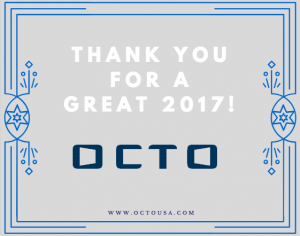
With the majority of millennials interested in a usage-based insurance (UBI) policy, and 84% rating UBI policies as a more fair way to price insurance, telematics represents a major opportunity for insurers. Most US telematics programs offer some variation of a good driving discount program. Telematics can support a much broader range of programs, allowing insurers to profitably enter new and niche markets.
Telematics-driven insurance products are generally broken into two categories: pay how you drive (PHYD) insurance and pay as you drive (PAYD) insurance. Below are just a few examples of new products insurers can bring to market through telematics.
Pay how you drive insurance
PHYD insurance is primarily focused on using driving behavior to assess risk and price premiums. There are several new products insurers can offer that fall under PHYD insurance, ranging from programs aimed at safe drivers in general, to those focused on niche or underserved audiences. In all cases, these products are aimed at improving pricing models for drivers who are lower risk than traditional rating models would suggest.
- Good driving discount
Drivers receive an initial premium discount at time of purchase, plus the offer of a greater discount for good driving behaviors. Insurers monitor driving behavior and adjust premiums based on observed risky behaviors. - Teen driver insurance
Teen driving discount programs similarly monitor driving behavior to reduce traditionally high premiums for young or new drivers. These policies do not generally offer a discount upfront, but instead reduce premiums for drivers who prove they are safest. - Accident forgiveness insurance
Accident forgiveness programs allow drivers who are categorized as high-risk to lower or eliminate premium surcharges from past at-fault accidents, speeding tickets, or minor violations. Driving behavior is monitored and premiums are adjusted if low-risk behavior is observed. - Safer driver acquisition
These programs use telematics to identify safe drivers prior to allowing them to purchase a policy. Driving behavior is monitored for a set period of time and only the safest drivers offered a low-cost policy. Less safe drivers may either not be offered a policy or be pushed to another product.
Pay as you drive insurance
One of the most significant risk factors is simply a matter of how much you drive. PAYD insurance is primarily focused on accurately monitoring mileage driven and pricing policies appropriately based on that mileage. PAYD programs enable several new products ranging from low-mileage discounts to short-term and on-demand products.
- Pay per mile insurance
Pay per mile insurance policies generally follow one of two models: a bulk mileage purchase followed by a cost per mile or a straight cost per mile policy. In either case, miles driven is the primary driver of policy cost. Telematics allows insurers to accurately monitor mileage in near real time and helps combat mileage reporting fraud. - On-demand insurance
On-demand insurance allows policyholders to drive any car for a period from hours to days. Using telematics, insurers can verify time, mileage, and location to ensure that drivers do not deviate from purchased protection. - Mileage verified insurance
Telematics provides insurers with a transparent way to verify mileage in near real time. This type of mileage verification allows insurers to adjust policy premiums up or down during the policy period or upon renewal.
Provisional versus permanent
For many types of telematics programs, insurers can define the telematics monitoring period, either provisional or permanent:
- Provisional: Policyholders are serviced for a set period of time (typically 30-90 days). After this period is over, drivers ‘graduate’ and get their final premium.
- Permanent: Policyholders are continuously serviced over the life of the policy.
Although provisional programs are more common, there has been a surge in permanent programs as insurers explore the benefits of telematics-driven claims and value-added policyholder services such as preventive maintenance alerts, geofencing, and curfews.
For a look into how insurer carriers in the US are using telematics today, along with the barriers to and benefits of telematics adoption, download our white paper, The State of Insurance Telematics.
Octo has over 15 years of experience designing and delivering telematics solutions around the world. Our portfolio of insurance telematics solutions support all of these insurance as well as other, custom-designed programs.
Contact us to learn more about our solutions and how we can help you bring a telematics-driven product to market.



